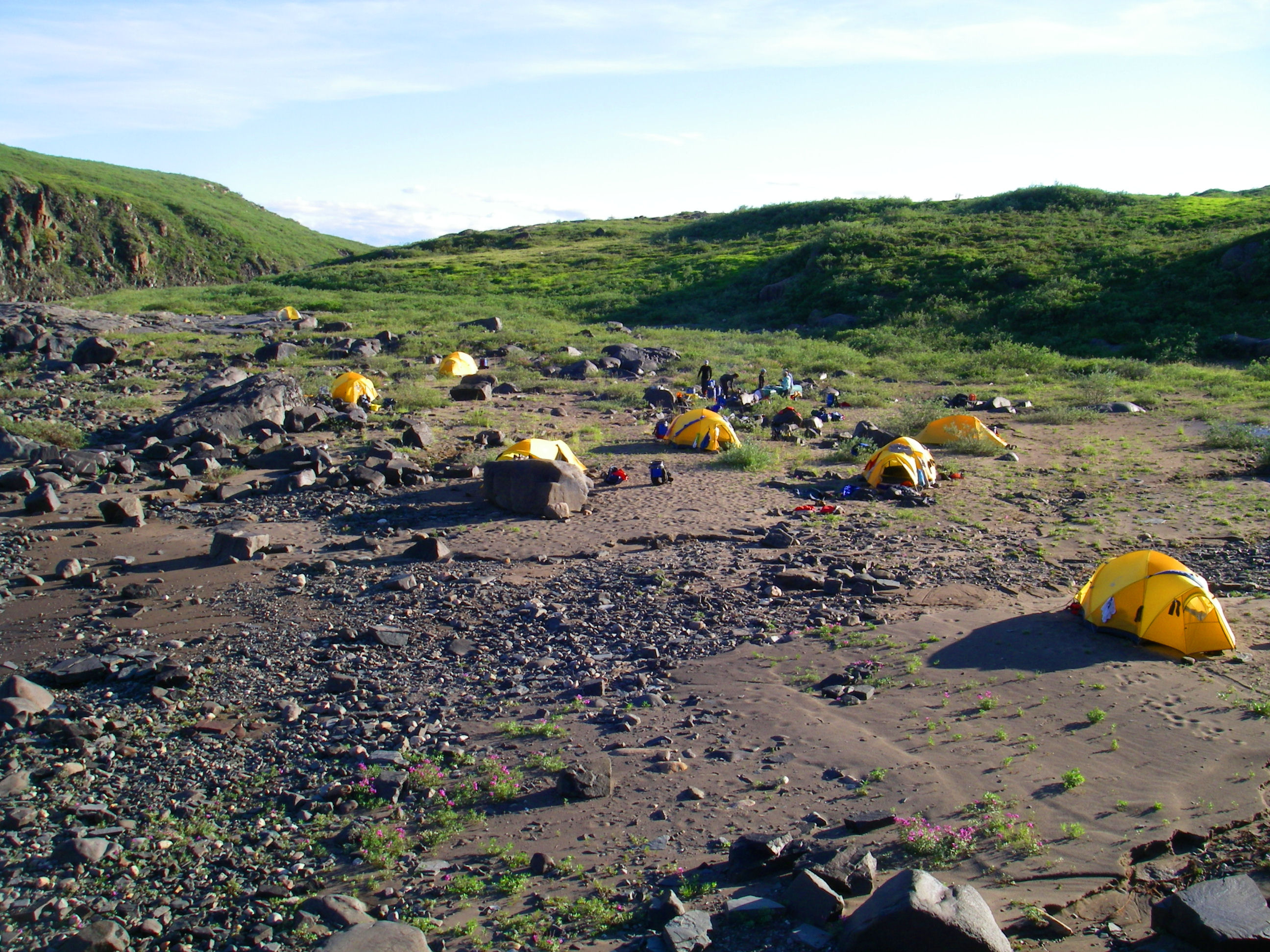Bloody Falls on:
[Wikipedia]
[Google]
[Amazon]
 Bloody Falls (or Bloody Fall, or Kogluktok, meaning "it flows rapidly" or "spurts like a cut artery" in
Bloody Falls (or Bloody Fall, or Kogluktok, meaning "it flows rapidly" or "spurts like a cut artery" in  Historically, this area was occupied by the
Historically, this area was occupied by the
 Bloody Falls (or Bloody Fall, or Kogluktok, meaning "it flows rapidly" or "spurts like a cut artery" in
Bloody Falls (or Bloody Fall, or Kogluktok, meaning "it flows rapidly" or "spurts like a cut artery" in Inuktitut
Inuktitut (; , syllabics ; from , "person" + , "like", "in the manner of"), also Eastern Canadian Inuktitut, is one of the principal Inuit languages of Canada. It is spoken in all areas north of the tree line, including parts of the provinces o ...
) is a waterfall
A waterfall is a point in a river or stream where water flows over a vertical drop or a series of steep drops. Waterfalls also occur where meltwater drops over the edge of a tabular iceberg or ice shelf.
Waterfalls can be formed in several wa ...
on the Coppermine River
The Coppermine River is a river in the North Slave and Kitikmeot regions of the Northwest Territories and Nunavut in Canada. It is long. It rises in Lac de Gras, a small lake near Great Slave Lake, and flows generally north to Coronation Gulf, a ...
, in the Kugluk/Bloody Falls Territorial Park
Kugluk/Bloody Falls Territorial Park ( Inuinnaqtun: ''kugluk''; English: waterfall) is located about southwest of Kugluktuk, Nunavut, Canada. The park is situated around the Bloody Falls on the Coppermine River and was listed as a national h ...
of Nunavut
Nunavut ( , ; iu, ᓄᓇᕗᑦ , ; ) is the largest and northernmost Provinces and territories of Canada#Territories, territory of Canada. It was separated officially from the Northwest Territories on April 1, 1999, via the ''Nunavut Act'' ...
, Canada. It was the site of the Bloody Falls Massacre
The Bloody Falls massacre was an incident believed to have taken place during Hudson Bay Company employee Samuel Hearne's exploration of the Coppermine River for copper deposits near modern-day Kugluktuk, Nunavut, Canada on 17 July 1771. Hearne' ...
in 1771 and the murder of two priests by Copper Inuit
Copper Inuit, also known as Kitlinermiut and Inuinnait, are a Canadian Inuit group who live north of the tree line, in what is now the Kitikmeot Region of Nunavut and in the Inuvialuit Settlement Region in the Inuvik Region of the Northwest Ter ...
Uloqsaq and Sinnisiak in 1913.
The nearest hamlet, Kugluktuk, Nunavut, is away.
 Historically, this area was occupied by the
Historically, this area was occupied by the Kogluktogmiut Kogluktogmiut (alternate: Kogloktogmiut) were a geographically defined Copper Inuit subgroup in the Canadian territory of Nunavut. They were located by Bloody Falls ( Inuktitut: ''Kogluktok''; meaning: "it flows rapidly" or "spurts like a cut arter ...
subgroup of Copper Inuit
Copper Inuit, also known as Kitlinermiut and Inuinnait, are a Canadian Inuit group who live north of the tree line, in what is now the Kitikmeot Region of Nunavut and in the Inuvialuit Settlement Region in the Inuvik Region of the Northwest Ter ...
.
In 1978, the portion of the Territorial Park northwest of the Coppermine River was designated the Bloody Falls National Historic Site of Canada
National Historic Sites of Canada (french: Lieux historiques nationaux du Canada) are places that have been designated by the federal Minister of the Environment
An environment minister (sometimes minister of the environment or secretary of t ...
, as the archaeological remains of pre-contact
In the history of the Americas, the pre-Columbian era spans from the original settlement of North and South America in the Upper Paleolithic period through European colonization, which began with Christopher Columbus's voyage of 1492. Usually, th ...
hunting and fishing sites in the area form a record of the presence of Pre-Dorset
The Pre-Dorset is a loosely defined term for a Paleo-Eskimo culture or group of cultures that existed in the Eastern Canadian Arctic from c. 3200 to 850 cal BC, and preceded the Dorset culture.
Due to its vast geographical expanse and to history ...
, Thule
Thule ( grc-gre, Θούλη, Thoúlē; la, Thūlē) is the most northerly location mentioned in ancient Greek literature, ancient Greek and Latin literature, Roman literature and cartography. Modern interpretations have included Orkney, Shet ...
, First Nation
Indigenous peoples are culturally distinct ethnic groups whose members are directly descended from the earliest known inhabitants of a particular geographic region and, to some extent, maintain the language and culture of those original people ...
and Inuit
Inuit (; iu, ᐃᓄᐃᑦ 'the people', singular: Inuk, , dual: Inuuk, ) are a group of culturally similar indigenous peoples inhabiting the Arctic and subarctic regions of Greenland, Labrador, Quebec, Nunavut, the Northwest Territories ...
peoples over the last 3000 years.
References
National Historic Sites in Nunavut Waterfalls of Nunavut {{KitikmeotNU-geo-stub